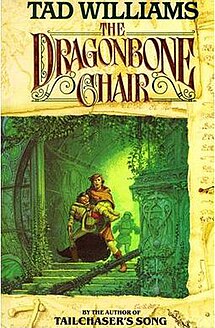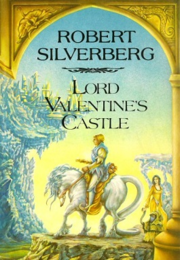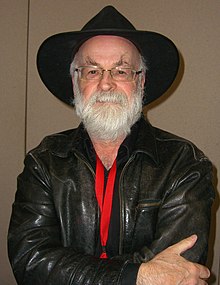
Plot can be a bit of a scary word. Hence all those famous writerly sayings.
You know – ‘Plot me no Plots’, ‘Out, vile plot!’, ‘Is this a plot I see before me?’, ‘Will no one rid me of this turbulent plot?’, ‘It was the best of plots, it was the worst of plots’ and of course the infamous ‘When shall three plots meet again? In thunder, ligh-‘ well, you get the concept. (Ok, I made the last one up. It is of course a parody of Terry Pratchett’s ‘When shall we three meet again?’ ‘Well, I can do next Tuesday…’) *waits for torrent of abuse from Shakespeare fans who think irony means ‘how clothes look when you’ve put that hot flat thing over them’*
I digress (constantly. It’s a writer thing). The point is, plot is a bit of an obsession if you’re a writer. Is it strong enough? Does it fit the theme? Aren’t they kind of the same thing? But no – you’ve read that plot grows from theme. You’ve read theme grows from plot, too! Eeek – now you’ve read that plot grows from characters! But surely characters come from plot? No good having a Special Forces sniper, then plotting a regency romance! Hold on – what’s this: a plot is a set of events linked by causality. Er – what’s that? What are plot holes and where are yours? Is your plot believable?  Would Mrs Tiggins-Mapleleaf really commit suicide in the jacuzzi just because she discovered her layabout husband, Fortescue Tiggins-Mapleleaf, in a state of undress with the butler in the library? (Maybe not – unless, ooh, unless she didn’t give a stuff about Mr T-M, but had yearned for the butler for ages! Where’s my notebook… jacuzzi, butler… library, yearnings… there. I’m back in the room.)
Would Mrs Tiggins-Mapleleaf really commit suicide in the jacuzzi just because she discovered her layabout husband, Fortescue Tiggins-Mapleleaf, in a state of undress with the butler in the library? (Maybe not – unless, ooh, unless she didn’t give a stuff about Mr T-M, but had yearned for the butler for ages! Where’s my notebook… jacuzzi, butler… library, yearnings… there. I’m back in the room.)
Then, just to scare the socks off you (your pants are gone already, fleeing at the mere mention of ‘causality’), someone asks what your sub-plot is.
You explain that none of the action is under the sea; have they not read your magnificent synopsis? The novel’s a regency romance set in Derbyshire. They look at you blankly. You squirm and try again. There are no popular high street chain design-your-own-sandwich establishments in it either. You clear your throat nervously, and add that you don’t think there was such a phenomenon in regency Derbyshire. Was there?
They still look blank and you realise it’s time to admit you don’t know what the hell a sub-plot is; now, before you run out of a) ideas that begin with sub b) self-respect.
If that’s you, fear not. Over the next few posts I will attempt to put my Diploma head on, the one that’s meant to understand this stuff; nick quotes from other writers that explain it better than me; and generally Reveal All about sub-plots.
For now, we’ll just establish what a sub-plot is.
Firstly, like a plot, a sub-plot is a series of events ordered by causality. If the term ‘causality’ is unfamiliar to you, think of it as ‘with a cause’; each event like a falling domino in a line. (Remember the domino metaphor, because we’ll come back to that in future posts). Still not clear? Enter Mrs Tiggins-Mapleleaf, stage right:

Mr T-M doesn’t show his wife affection because he is secretly gay causing…
Mrs T-M to look elsewhere for affection and develop a crush on the butler, AND Mr T-M to develop a crush on the butler, causing…
Mr T-M to reveal his feelings and get the butler in a passionate clinch in the library, unfortunately witnessed by Mrs T-M, causing...
Mrs T-M to feel betrayed and despair of finding lasting happiness, causing…
Mrs T-M to commit suicide in the jacuzzi, causing…
Mr T-M to leap in to save her, causing…
Mr T-M to fail – but hit his head and drown in the attempt!, causing…
The butler to inherit the huge estate and erect a memorial to them both, also mounting an international campaign for increased jacuzzi safety measures, causing…
him to meet a lovely bloke named Jeff at the Jersey Jacuzzi Conference and live happily ever after.
Obviously if you wish to steal this stonker of a plot, get in touch and we’ll discuss terms. It’s not often I let a gem like that out on public view, but I like to think I’m part of a supportive writing community. *yes, the clothes do look flat, don’t they*
Secondly, a sub-plot is a secondary plot – less important than the main plot. You would expect it to ‘occupy’ less of the text. Some sub-plots interact hugely with the main plot; some barely at all. It depends on the effect the author want to achieve, and the nature or genre of the story. Which brings us on to:
What Can A Sub-Plot Do For Me, And Do I Need One? But we’ll think about that next time.
![By Robin Zebrowski (Terry Pratchett, Powell's) [CC BY-SA 2.5 (http://creativecommons.org/licenses/by-sa/2.5)], via Wikimedia Commons File:Terry Pratchett at Powell's 2007-cropped.jpg](http://upload.wikimedia.org/wikipedia/commons/thumb/8/8c/Terry_Pratchett_at_Powell%27s_2007-cropped.jpg/398px-Terry_Pratchett_at_Powell%27s_2007-cropped.jpg)


 Love, love, love Robert Silverberg. I think we’ve reached my mid to late twenties now. I love all the different races, a huge world that’s so similar to ours in some ways and so different in others. Some intriguing ideas (having your morals tweaked in your dreams?) and the sense that he’s making subtle statements about real life (something I enjoy in TV sci-fi and fantasy as well. I’m often surprised the USA aired the Canadian produced Stargate – some of the criticism wasn’t that well-hidden!).
Love, love, love Robert Silverberg. I think we’ve reached my mid to late twenties now. I love all the different races, a huge world that’s so similar to ours in some ways and so different in others. Some intriguing ideas (having your morals tweaked in your dreams?) and the sense that he’s making subtle statements about real life (something I enjoy in TV sci-fi and fantasy as well. I’m often surprised the USA aired the Canadian produced Stargate – some of the criticism wasn’t that well-hidden!).


